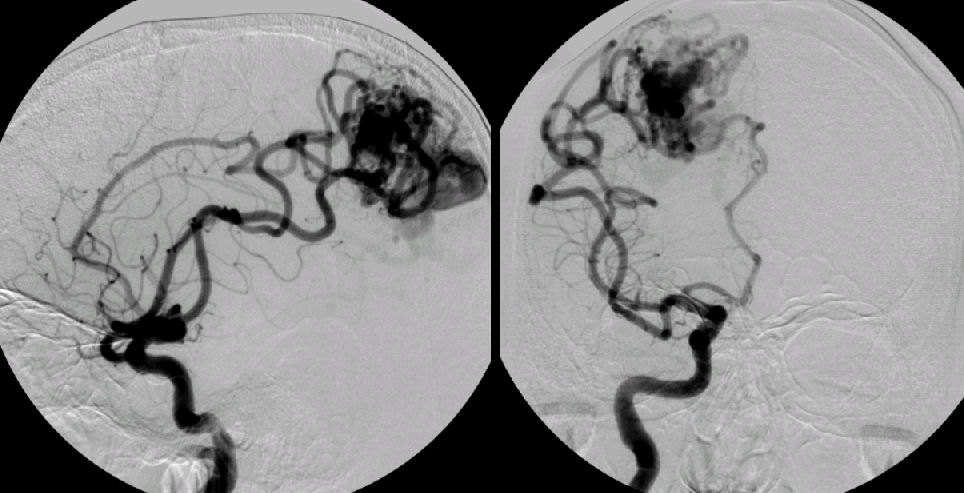
|
A 44-year old man presented with headaches and focal seizures.
The seizure aura was similar to a migraine aura with positive visual phenomena
obscuring the right visual field. |

![]()
| Arteriovenous Malformation (AVM):
Right internal carotid artery (ICA) angiogram. (Left) lateral view; (Right)
AP view. Note the
tangle of numerous blood vessels in the right occipital lobe, arising from
posterior branches of the middle cerebral artery (MCA) as well as
some vessels from the anterior cerebral artery (ACA). These are dilated
vessels of the AVM. Arteriovenous malformations (AVMs) are a congenital abnormality of blood vessels. They consist of a tangle of abnormal vessels supplied by arterial feeders and often drained by large dilated veins. AVMs most often occur in isolation. Rarely, they are associated with genetic disorders, among them: Osler-Weber-Rendu syndrome (hereditary hemorrhagic telangiectasia), Sturge-Weber disease, and von Hippel-Lindau syndrome. AVMs are often asymptomatic. Symptoms, when present, may include: • headaches (in some cases a unilateral throbbing headache, mimicking a migraine headache) • seizures (focal, or focal to generalized) • focal neurological deficits • bleeding (may mimic subarachnoid hemorrhage from an aneurysm; bleeding from AVMs account for 2% of all strokes) Larger AVMs are often seen on CT or MRI. Angiography is required to define the vascular anatomy and plan appropriate treatment. Treatment may involve surgical resection, embolization or radiotherapy. |
Revised
11/29/06
Copyrighted 12007. David C Preston